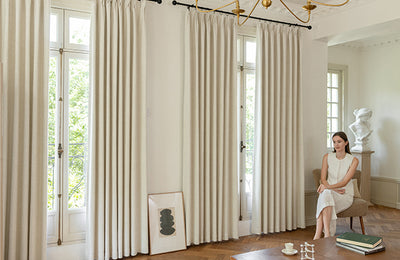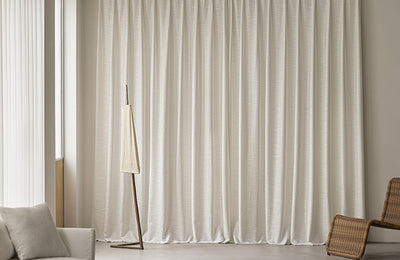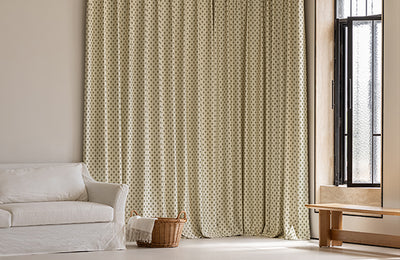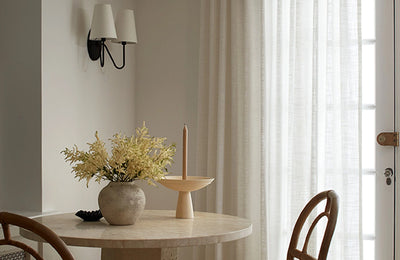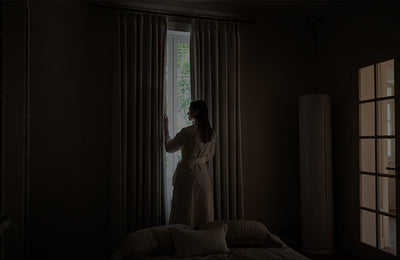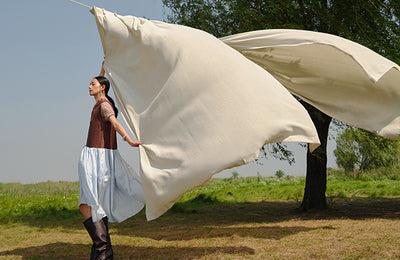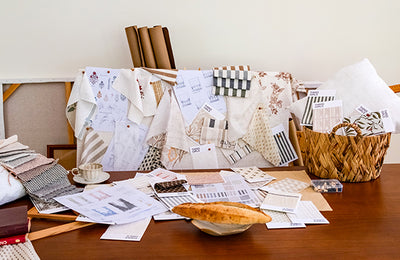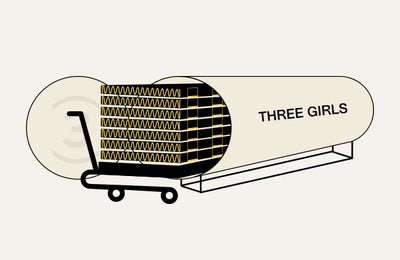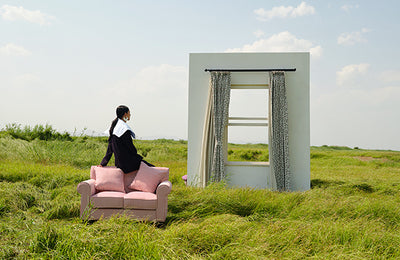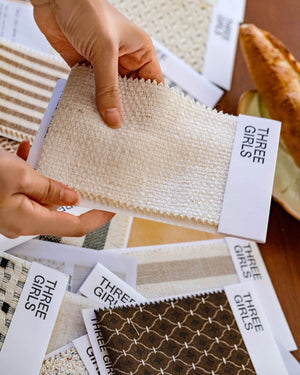

Sustainable Drapery for a Greener Future
At ThreeGirls, we're dedicated to protecting our planet by offering sustainable, eco-friendly, and non-toxic drapery solutions.
By choosing ThreeGirls, you're not just decorating your space, you're helping the environment.

Organic Fabric, Natural Choices
Our drapery fabrics are carefully crafted from organic materials such as cotton, linen, hemp, and bamboo. We also incorporate recycled polyester fibers into some blends. These organic fabrics are produced using eco-conscious methods, free from harmful chemicals and pesticides.
By opting for organic, you're making a choice that's gentle on the Earth.


What is Flax?
A sustainable fiber for the production of linen fabrics.
Flax has a long history and has been used to make clothing, canvas and ropes as early as ancient Egypt. Flax has always been the main textile raw material in ancient Greece, ancient Rome and medieval Europe. With the Industrial Revolution, the linen textile industry flourished, but was gradually replaced by cotton. In recent years, flax has received renewed attention due to the focus on sustainable materials.


Features
- Smooth and shiny
- Durable, hard and crisp
- High temperature resistance
- Breathable and cool to wear in summer
- Low elasticity
- Pesticide and insect resistance
- Absorbs and releases moisture quickly
- Fades in constant light
- Difficult to achieve bright colors as they are difficult to dye and bleach
- Softens and softens after washing and laundering
- Easy to wrinkle
- Antistatic
- Biodegradable
- Flax grows quickly and is easy to grow, requiring few chemical inputs and no irrigation during cultivatio

What is Ramie?
A strong plant fiber similar to linen.
Ramie has an ancient history and was used by ancient civilizations in China and India around 6000 BC. Ramie was widely used in ancient Egypt, ancient Greece and ancient Rome to make clothing, ropes and canvas. In medieval Europe, ramie was one of the main textile raw materials. During the colonial era, European colonists introduced ramie to the Americas and cultivated it on a large scale. In recent years, ramie has once again attracted attention due to the demand for sustainable materials, re-emerging in fields such as fashion and home furnishings.


Features
- Hard and brittle, but softens over time and with more washes
- Strength increases when wet
- Keep garments in good shape
- Silk texture increases after washing
- High temperature resistance
- Low elasticity
- Releases moisture quickly
- More absorbent than cotton
- Antibacterial and anti-mildew
- Good dyeing effect, but easy to discolor
- Slight shrinkage
- Easy to break if wrinkled significantly
- Easily generate static electricity
- Ramie is a plant-based source of fibers that's quickly and easily renewable. It requires no pesticides or herbicides to grow and is naturally resistant to mold, mildew, and bacteria.atio

What is Jute?
A low-cost, easy-maintenance, fast-growing fiber.
Jute has a long history. In ancient Egypt and ancient India, people already used jute to make clothing, ropes and various supplies. Jute was used extensively in Europe during the Middle Ages, particularly in textiles, rope and canvas making. With the colonial era, jute was introduced to the Americas and became an important raw material for European markets. However, with the rise of synthetic fibers, jute's use gradually declined. Recently, jute has attracted renewed attention due to the demand for sustainable materials.


Features
- Durable
- Strength decreases when wet
- Keep garments in good shape
- Low elasticity
- Ability to insulate sound and heat
- Good dyeing effect, no fading
- Antistatic
- Biodegradable
- It is a fast-growing, low-maintenance crop that can be harvested every 4 to 6 months with little need for pesticides or fertilizers.

What is Bamboo?
A plant native to China, a region renowned for its unparalleled diversity of bamboo species.
Bamboo is a remarkable plant known for its sustainability, rapid growth, and versatility. Native to Asia, it thrives in diverse climates and serves as a renewable resource for construction, furniture, and household items. Its natural strength and aesthetic appeal make it ideal for eco-friendly living, while its ability to release oxygen enhances environmental health.


Features
- Sustainability, Eco-Friendly and Recyclability
- Strength: Bamboo is flexible yet has high tensile strength similar to steel.
- Durability: Bamboo products are long-lasting and can withstand various environmental conditions.
- Versatility: Various applications for bamboo include construction, textiles, and more.
- Regenerative: Bamboo's rapid growth allows it to regenerate quickly, helping to combat deforestation.
- Carbon Sequestration: Bamboo absorbs more carbon dioxide than many other plants, contributing to a lower carbon footprint.
- Aesthetic Appeal: Bamboo has a natural beauty that adds a touch of elegance and warmth to any product.
- Resistance to Pests: Bamboo is naturally resistant to pests and diseases, reducing the need for chemical treatments.
- Bamboo's low water absorption rate suits humid conditions.

Our Commitment to Sustainability
At THREE GIRLS, we firmly believe that a beautiful home should never come at the expense of the planet. Every curtain we create reflects our commitment to the environment and our care for the people who live with it. We carefully consider every detail to help make users’ lives more comfortable — and the Earth a little healthier.
Water-Saving Cleaning Service
Our Healthy Curtain Cleaning Service uses non-toxic, eco-friendly detergents and water-efficient industrial machines. The process is safer for both the environment and the families who enjoy our curtains.
Smart, Energy-Efficient Manufacturing
In our 107,000 sq ft smart factory, we utilize energy-efficient systems and streamlined production to minimize emissions and resource waste. We believe real sustainability starts from the source.
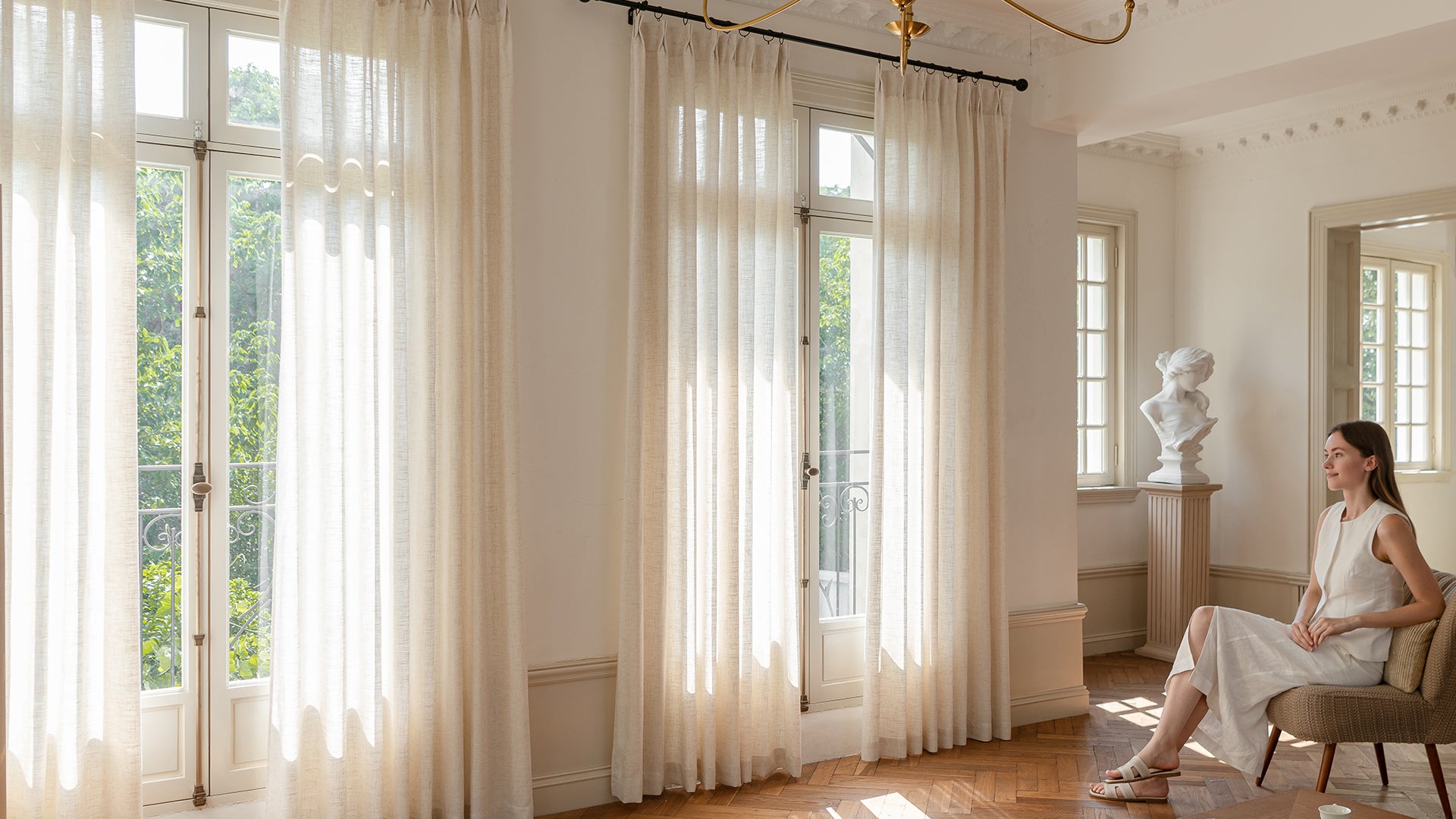
Innovative Blackout Technology
Our exclusive ZeroLight TriCore™ technology, featured in our 100% blackout lining, offers exceptional softness and drape while delivering superior performance.
It blocks light completely, insulates against heat and cold, and reduces noise — helping to minimize energy loss through windows and create a more comfortable, efficient living space.

Sustainable Packaging
We use recyclable or biodegradable materials in our minimalist packaging, avoiding unnecessary plastic and waste. This reduces environmental impact and helps minimize single-use waste in users’ homes.

Eco-Friendly Materials
Threegirls made from natural cotton and linen fabrics—without blending—our curtains embody sustainable living at its finest. Both cotton and linen are biodegradable, renewable, and grown with minimal environmental impact. Together, they create a soft yet textured finish that feels breathable, elegant, and earthy. These curtains offer a timeless look while aligning with eco-conscious values, making them a beautiful and responsible choice for your home.

